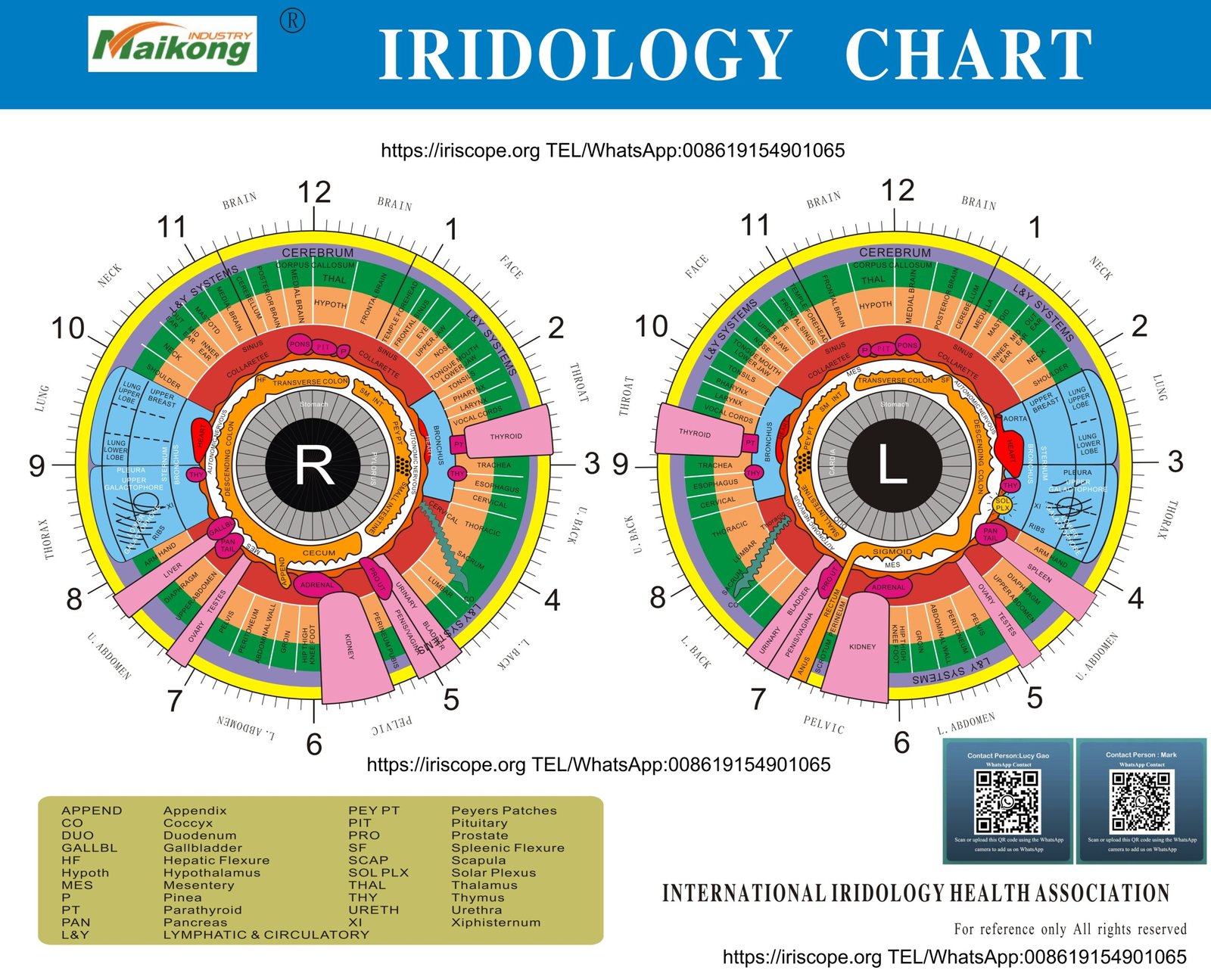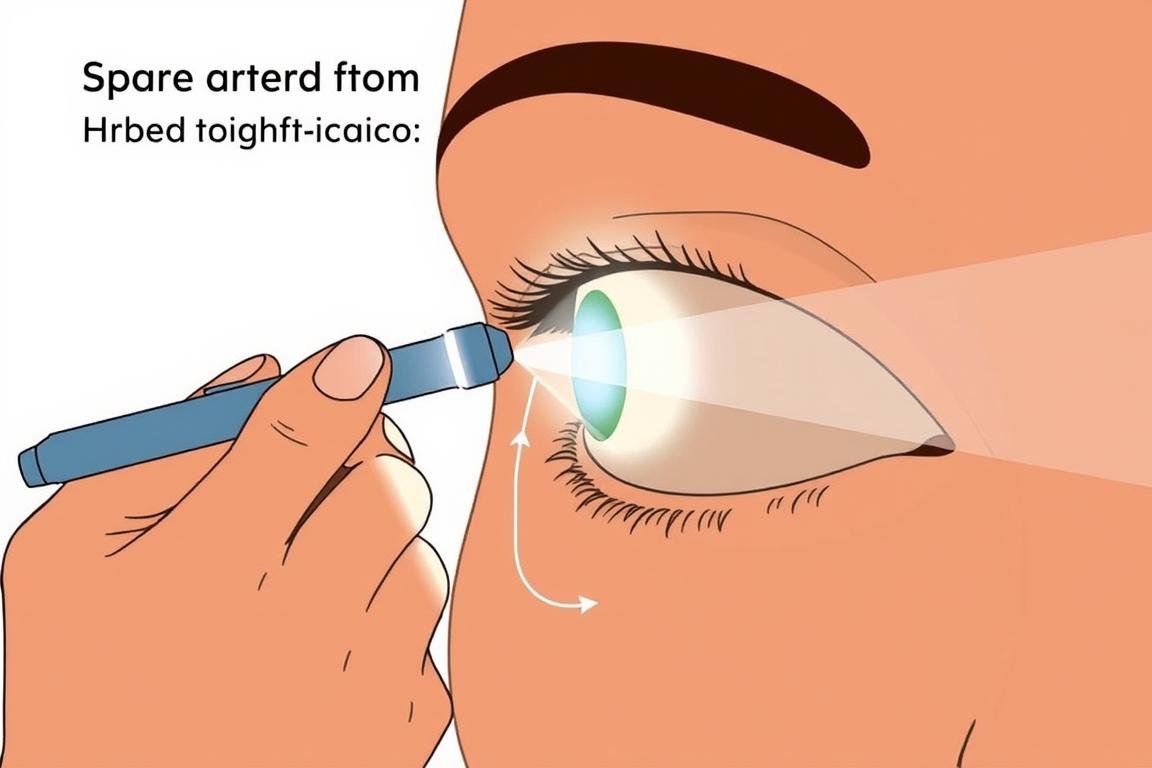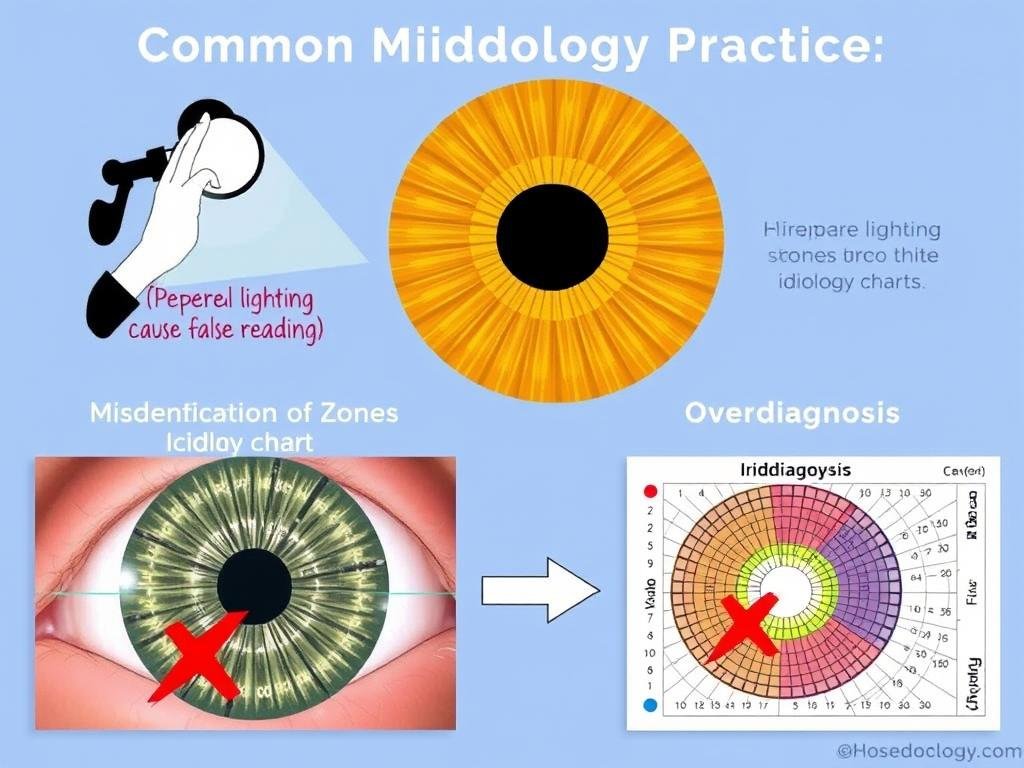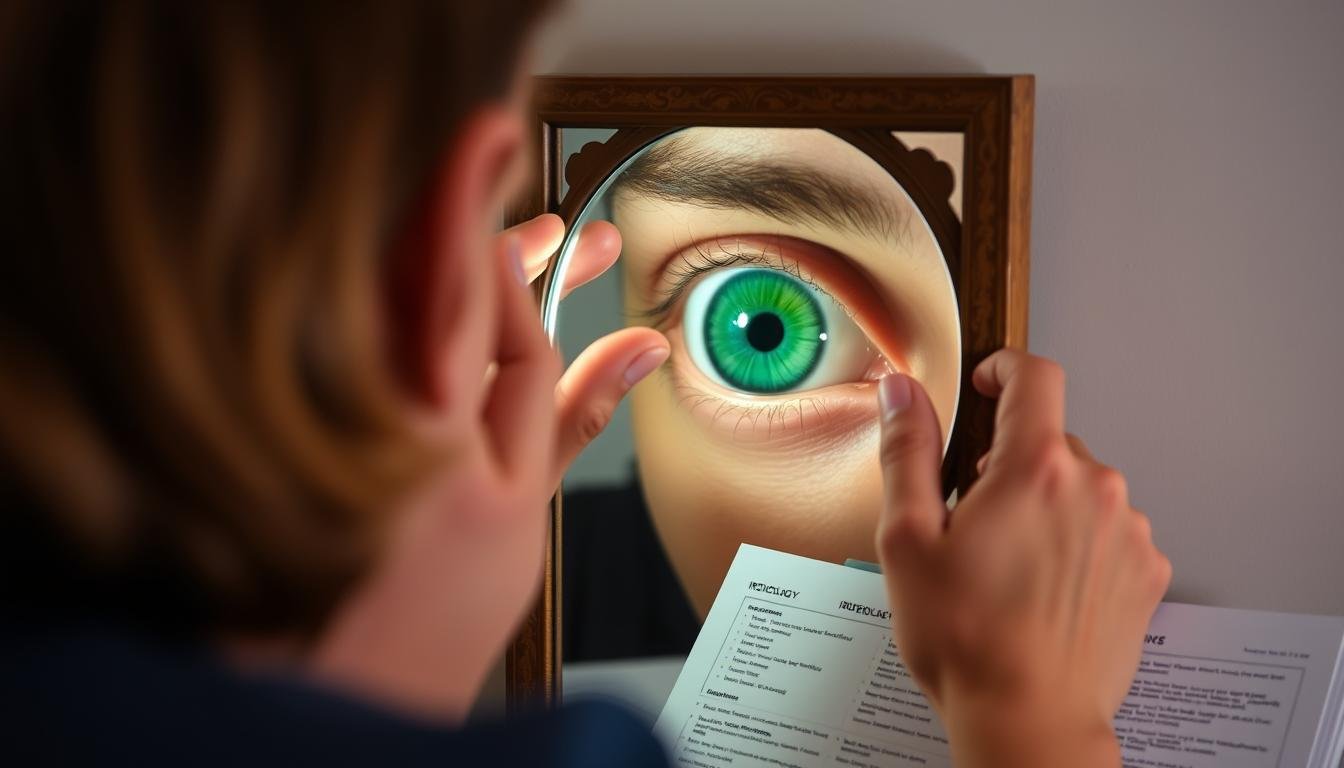The human iris contains intricate patterns that some believe can reveal insights about our overall health. An Iridology چارٽ serves as a map to interpret these patterns, connecting specific zones of the iris to different organs and systems in the body. While conventional medicine remains skeptical, many alternative health practitioners use iridology as a complementary assessment tool. This guide will walk you through the process of understanding and interpreting an Iridology چارٽ, providing you with the knowledge to explore this fascinating field of alternative health analysis.

Understanding the Basics of an Iridology Chart
هڪ Iridology چارٽ is a diagnostic tool used in alternative medicine that maps different zones of the iris to corresponding organs and systems in the body. Practitioners of iridology believe that changes in these iris zones can reflect the health status of the related body parts. The practice is based on the concept that the iris connects to every organ and tissue via the nervous system, making it a potential window into overall health.
The iris is typically divided into multiple sections, creating a detailed map that iridologists use to identify potential health concerns. Each eye corresponds primarily to one side of the body, with the right iris reflecting the right side and the left iris reflecting the left side.
| Iris Zone |
Body System/Organ |
Location on Iris |
| Brain/Head Zone |
Brain, sinuses, scalp |
Top region of iris |
| هضم زون |
Stomach, intestines, liver |
Central area around pupil |
| Circulatory Zone |
Heart, blood vessels |
Upper quadrants |
| لففڪ زون |
Lymph nodes, immune system |
Outer ring of iris |
| پيشاب زون |
Kidneys, bladder |
Lower region of iris |
Understanding these basic correlations is the first step in learning to read an Iridology چارٽ. As you become more familiar with the chart, you’ll begin to recognize how different markings and colorations might relate to specific health conditions.
توهان جي غير منطقي جي سمجهه کي وڌايو
Want to learn more about the fascinating connections between your iris and overall health? Download our comprehensive Iridology چارٽ guide with detailed zone mappings.
ڊائون لوڊ مفت icidology گائيڊ
Preparing to Analyze an Iridology Chart
Before you begin interpreting an Iridology چارٽ, it’s important to gather the right tools and create optimal conditions for accurate observation. The iris contains subtle details that require proper magnification and lighting to identify correctly.

Essential Tools for Iridology Analysis
- A high-quality magnifying glass (10x magnification is ideal)
- A printed or digital Iridology چارٽ for reference
- A penlight or small flashlight with white light
- A digital camera with macro capabilities or smartphone with macro lens attachment
- A notebook to record observations
Creating Optimal Conditions
Proper lighting and positioning are crucial for accurate iris analysis. Natural, indirect daylight provides the best illumination for observing iris details. Avoid direct sunlight, which can cause the pupil to contract excessively and obscure important features.
Pro Tip: When examining your own iris, stand about 6-8 inches away from a mirror in a well-lit room. Use a small flashlight held at a 45-degree angle to illuminate the iris without causing pupil constriction. For examining others, have them sit comfortably with their head stabilized.
Take multiple photographs of each iris if possible. This allows you to study the details more carefully without causing eye strain or discomfort to the subject. Ensure the images capture the entire iris with clear focus on the intricate patterns and markings.

Step-by-Step Guide to Reading an Iridology Chart
Now that you understand the basics and have prepared your tools, let’s walk through the process of analyzing the iris using an Iridology چارٽ. This methodical approach will help you identify and interpret the various signs and markings present in the iris.
Step 1: Identify the Iris Topography
Begin by observing the overall structure and color of the iris. The base color (blue, brown, mixed, etc.) provides important baseline information about constitutional strengths and tendencies. Iridologists classify iris types into several categories:

- Lymphatic Type: Generally blue or light-colored irises with loose fiber structure
- Hematogenic Type: Brown or darker irises with denser fiber structure
- Mixed Type: Combination of colors and structures
- Biliary Type: Greenish or mixed colors with specific markings
Next, examine the fiber density and arrangement. Look for areas where fibers appear tightly packed versus areas where they seem looser or more separated. These variations can indicate different levels of tissue strength or potential weakness in corresponding body systems.
Step 2: Map Zones Using the Iridology Chart
With a reference Iridology چارٽ beside you, begin mapping the iris zones to their corresponding body systems. Most charts divide the iris into concentric rings and pie-shaped sections, each representing different organs or systems.



- The innermost ring around the pupil typically corresponds to the digestive system
- The middle ring often relates to the circulatory and respiratory systems
- The outer ring usually represents the skin, lymphatic system, and extremities
- The right iris generally reflects organs on the right side of the body (liver, gallbladder, etc.)
- The left iris typically corresponds to organs on the left side (heart, spleen, etc.)
Need Expert Guidance?
Interpreting an Iridology چارٽ can be complex. Our certified iridologists can provide personalized analysis and health insights based on your unique iris patterns.
هڪ مشاورت جو وقت مقرر ڪريو
Step 3: Interpret Common Markings
Once you’ve mapped the zones, look for specific markings and features within each area. These markings can provide insights into potential health conditions or tendencies. Here are some common iris signs to look for:


ريڊيل فروز
These appear as lines radiating from the pupil outward. Deep furrows may indicate chronic stress or inflammation in the corresponding organ. The direction and location of these lines help pinpoint specific areas of concern.
دٻاء لڳندو آهي
Also called nerve rings, these appear as circular lines around the iris. They may suggest nervous tension, anxiety, or adrenal stress. Multiple rings could indicate prolonged or severe stress patterns.
رنگ جا نشان
Dark spots or flecks in the iris may represent toxin accumulation or metabolic deposits in the corresponding body area. Their color, size, and location provide additional diagnostic information.
ليڪونا
These closed, often darkened areas may indicate inherent weaknesses or lesions in specific organs. Their shape and depth can suggest the severity of the condition.
crypts
Open, lighter-colored areas that may represent areas of increased activity or potential for healing in the corresponding organ system.
Color Changes
Variations in color within specific zones can indicate inflammation, congestion, or other changes in the corresponding body systems.
Remember that these markings should be interpreted in context with the person’s overall health history and symptoms. No single marking should be used to diagnose a specific condition.

Common Mistakes When Using an Iridology Chart
As you begin practicing with an Iridology چارٽ, be aware of these common pitfalls that can lead to misinterpretation or inaccurate conclusions.

Best Practices
- Use iridology as a complementary assessment tool
- Consider findings in context with medical history
- Recognize patterns rather than isolated markings
- Seek proper training before making health assessments
- Use consistent, high-quality lighting for examinations
Common Mistakes
- Diagnosing specific diseases based solely on iris markings
- Ignoring conventional medical advice in favor of iridology
- Using poor-quality tools or inadequate lighting
- Misidentifying iris zones due to lack of proper training
- Making definitive health claims without supporting evidence
اهم: Iridology should never replace conventional medical diagnosis or treatment. Always consult with qualified healthcare professionals for any health concerns. Iridology is best used as a complementary tool for gaining insights into potential health tendencies.
Remember that the iris does change over time, but these changes occur gradually. Sudden or dramatic changes in iris appearance should prompt a visit to an eye doctor, as they may indicate eye conditions rather than systemic health issues.
Practical Applications of Iridology Chart Analysis
Now that you understand how to read an Iridology چارٽ, let’s explore how this knowledge can be applied practically as part of a holistic health approach.

Preventive Health Insights
One of the most valuable aspects of iridology is its potential for identifying areas of weakness before they manifest as symptoms. By recognizing these tendencies early, you can implement targeted lifestyle changes to support these areas.
Complementary Assessment
Iridology can complement other health assessments by providing additional perspectives on potential imbalances. When combined with medical history, lifestyle factors, and conventional diagnostics, iris analysis may offer a more comprehensive view of health patterns.
Tracking Progress
By documenting iris changes over time, you can potentially track how lifestyle modifications and health interventions affect your body. Some practitioners photograph the iris at regular intervals to monitor subtle changes that may reflect improving or declining health in specific systems.
Enhance Your Holistic Health Journey
Join our community of holistic health enthusiasts learning to apply iridology principles for better wellness. Get access to expert webinars, detailed Iridology چارٽ resources, and personalized guidance.
Join Our Community
Understanding the Limitations of Iridology Charts
حال ۾ Iridology Charts can provide interesting insights, it’s important to understand their limitations and approach this practice with a balanced perspective.

سائنسي نقطه نظر
The scientific community generally views iridology with skepticism. Multiple clinical studies have failed to demonstrate that iridologists can consistently detect diseases through iris examination. Conventional medicine does not recognize iridology as a valid diagnostic method.
Complementary Approach
Rather than using iridology for diagnosis, many practitioners now approach it as a complementary tool that may provide insights into constitutional tendencies and potential areas of weakness. This perspective aligns better with current understanding of health and wellness.
“Iridology is best viewed as one piece of a larger holistic health puzzle, offering potential insights that should be considered alongside conventional medical wisdom and other assessment tools.”
– Journal of Complementary Health Practices
When exploring iridology, maintain a balanced perspective that values both alternative and conventional approaches to health. The most beneficial approach is often one that integrates multiple sources of information while prioritizing evidence-based practices for serious health concerns.
Conclusion: Your Journey with Iridology Charts
Learning to read an Iridology چارٽ opens a fascinating window into the potential connections between your iris patterns and overall health. While this practice has limitations and should not replace conventional medical care, many find value in the holistic perspective it offers.

As you continue your exploration of iridology, remember that the greatest benefit comes from combining this knowledge with other health practices and professional guidance. Consider seeking certified training if you wish to deepen your understanding of iris analysis beyond the basics covered in this guide.
Whether you’re a health enthusiast curious about alternative assessment methods or someone looking for additional insights into your body’s patterns, the study of Iridology Charts offers a unique perspective that many find valuable on their wellness journey.
Continue Your Iridology Education
Ready to take your understanding of Iridology Charts to the next level? Our comprehensive online course provides in-depth training with professional guidance from certified iridologists.
Explore Our Iridology Course



























